
Port Royal Ferry
"Successful attack of a detachment of the Federal forces, under General Stevens, supported by four gunboats…

Camp Zagonyi
"Camp Zagonyi, encampment of Fremont's army on the prairie, near Wheatland, Mo., October 14th, 1861.…

Village of Clarksburg
"Village of Clarksburg, Western Virginia, headquarters of General Rosecrans. Clarksburg, a post village,…
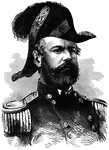
General Fitzjohn Porter
"General Porter, born at Portsmouth, N. H., June 13th, 1822, was graduated from the United States Military…
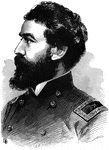
General John M. Brannan
"General Brannan, born in the District of Columbia in 1819, was graduated from the United States Military…
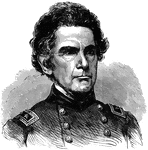
General Ormsby MacKnight Mitchel
"General Mitchel, born at Morganfield, Union County, Ky., August 28th, 1809, died at Hilton Head, S.…
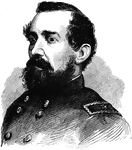
General Jesse L. Reno
"General Reno, born in Wheeling, W. Va., June 20th, 1823, died on South Mountain, Md., September 14th,…

Shelling of Confederate Camp
"Shelling of a Confederate camp on the Potomac by Lieutenant Tompkins, of the First Rhode Island battery.…
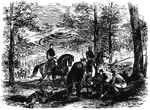
Battle of Corrick's Ford
"Battle of Carrick's Ford, Western Virginia- discovery of the body of General Garnett, by Major Gordon…

Battle of White Oak Swamp Bridge
"Battle of White Oak Swamp Bridge, Monday June 30th, 1862- Ayres's, Mott's and Randall's batteries checking…

Fort Runyon
"Section of Fort Runyon, Va., guarding the road to Alexandria, occupied by the Twenty-first Regiment,…
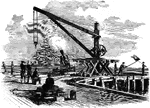
Sawyer gun
"Practicing with the celebrated Sawyer gun on the Confederate batteries at Swell's Point, near Norfolk,…

State Prisoners at Fort Lafayette
"Landing state prisoners at Fort Lafayette, New York harbor, in 1861. Fort Lafayette, New York harbor,…

Cavalry of General Banks
"A reconnoitring detachment of General Banks's cavalry, Hyattstown, Md., in the distance. There are…

Bombardment of Fort Henry
"Bombardment of Fort Henry, Tennessee River, Tenn., by the Mississippi Flotilla, Flag Officer Foote,…

Ship Island
"Ship Island, near the mouth of the Mississippi- United States war steamer "Mississippi" firing on a…
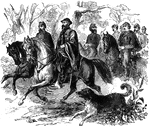
Battle of Pea Ridge
"General Asboth and staff at the Battle of Pea Ridge, Ark., March 6th-8th, 1862. The gallantry displayed…
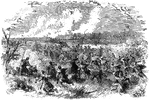
Battle of Roanoke Island
"Battle of Roanoke Island, February 8th, 1862- decisive bayonet charge of the Ninth New York Volunteers…

Burnside Expedition
"The Burnside Expedition- melancholy deaths of Colonel J. W. Allen, Surgeon Waller and the Second Mate…
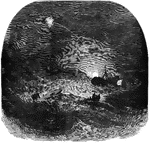
Monitor
"Loss of the Monitor- gallant attempt of the officers and crew of the United States steamer…

Burning of York
"A detachment of United States sailors from the gunboats Albatross and Gemsbok burning…
Gunboat engagement
"Engagement between the United States gunboats, commanded by Commodore Davis, and the Confederate Mosquito…

View of Strasburg
"View of the town of Strasburg, valley of the Shenandoah, occupied by the Federal forces under General…

Delaware Indians
"Delaware Indians acting as scouts for the Federal army in the West. General Fremont, on taking command…

Freemont's troops
"Gathering of Fremont's troops on the prairie, near Tipton, Mo., on the eve of its departure in pursuit…

Jefferson City, Missouri
"Jefferson City, capital of Missouri. The arrival of General Fremont's division, September 26th, 1861.…

Camp Wool
"Camp Wool, two miles from Fort Clark, Hatteras Island, occupied by Hawkins's Zouaves, Ninth Regiment,…

Battle at Dam No. 4
"Battle at Dam No. 4, Potomac River, between Butterfield's brigade and a large Confederate force. A…

Battle of Munfordville
"Battle of Munfordville, Ky., Sunday, September 14th, 1862- the Confederates charging through the abatis…
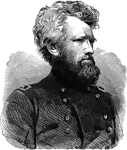
General Robert H. Milroy
"General Milroy, born in Washington County, Ind., June 11th, 1816, was graduated at Norwich University,…
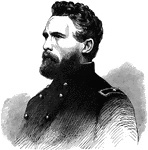
General Hiram G. Berry
"General Berry, born in Thomaston (now Rockland), Me., August 27th, 1824, died at Chancellorsville,…
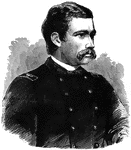
General George D. Bayard
"General Bayard, born in Seneca Falls, N. Y., December 18th 1835, died December 14th, 1862, was graduated…
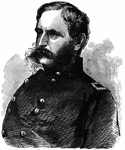
General Christopher C. Augur
"General Augur, born in New York in 1821, was graduated from the United States Military Academy in 1843.…

Conrad's Ferry
"Conrad's Ferry, Md., above Harrison's Island, on the Potomac River, the place of passage of Colonel…

Oven
"'Fresh Bread!'- Impromptu oven built by the Nineteenth Regiment, New York Volunteers, in General Banks's…
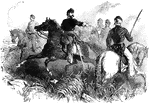
General Burnside
"Major General Burnside assuming command of the Army of the Potomac- issuing orders to his staff. 'Headquarters,…

Fort Macon
"Surrender of Fort Macon, GA., April 26th, 1862. Exterior on side facing the Federal Batteries, showing…
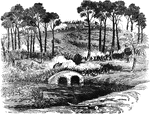
Battle of Antietam
"Battle of Antietam, Md. Burnside's division carrying the bridge over the Antietam Creek and storming…

Fort Macon
"Surrender of Fort Macon, GA., April 26th, 1862- lowering the Confederate flag."— Frank Leslie,…
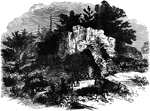
Killing's Cave
"Killing's Cave, on the banks of the Potomac, near Sharpsburg, the place of refuge of many citizens…

Bird's Point
"View of the fortifications erected by the Federal troops at Bird's Point, MO., opposite Cairo, Ill."—…

Army of the Potomac
"Advance of the Army of the Potomac. Occupation of Winchester, VA., and the abandoned Confederate Fortifications,…
Confederates
"Confederates in ambush firing on a reconnoitring expedition to Oyster Creek, Roanoke Island, N.C."—…

Fort Thompson
"Bombardment and capture of Fort Thompson, thirteen guns, near New Berne, on the Neuse River, by the…

Pocotaligo Bridge
"The Federal troops under Generals Brannan and Terry driving the Confederates under beauregard across…
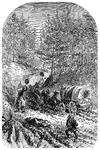
Federal Baggage Train
"Federal baggage train on its way to the army at Falmouth, VA., December, 1862. Our illustration represents…

Admiral Silas H. Stringham
"Rear admiral Stringham, born in Middletown, Orange County, N. Y., November 7th, 1798; died in brooklyn,…

Masquerade of War
"The Masquerade of War. Ingenious method of disguising the masts and hulls of Commodore Porter's morter…

Columbus, Kentucky
"General view of Columbus, Ky., and its fortications, looking down the river, showing the 'Iron Bluffs'…

Paducah, Kentucky
"View of the town of Paducah, Ky., at the confluence of the rivers Ohio and Tennessee, the Northern…
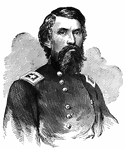
General John Buford
"General Buford, born in Kentucky in 1825, died in Washington, D. C., December 16th, 1863, was graduated…
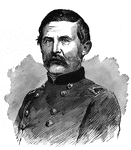
General Thomas L. Crittenden
"General Crittenden, born in Russellville, Ky., May 15th, 1815, studied law under his father, was admitted…
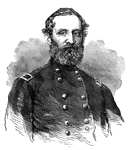
General George W. Morgan
"General Morgan, born in Washington County, Pa., September 20th, 1820, died at Old Point Comfort, Va.,…

General John G. Foster
"General Foster, born in Whitefield, N. H., May 27th, 1823, died in Nashua, H. H., September 2nd, 1874,…

Reconnoissance
"Reconnoissance by Colonel Max Weber's Turner rifles in the vicinity of Newmarket Bridge, on the road…




